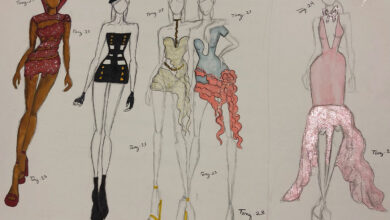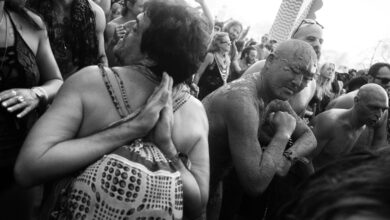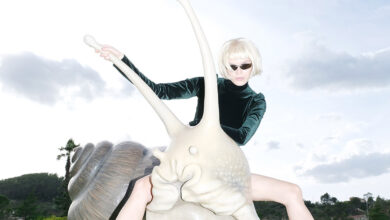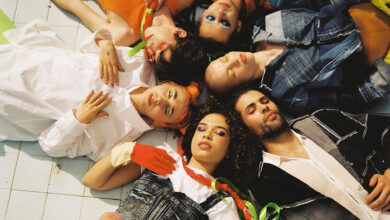Jorge Ayala, Director of the AA Visiting School in Paris and founder of [Ay]A Studio, talks to Zoot about a new AA workshop about architecture and fashion and about a very special project he is currently working on, a fashion collection.
Text by Anna Battista
In March the Architectural Association School launched in Paris, as part of the international visiting programme, the “F(AA)shion” workshop, an intensive design-based programme of lectures. The workshop, curated by Jorge Ayala, Director of the AA Visiting School in Paris and founder of [Ay]A Studio, tried to explore the new possibilities offered by fashion and architecture through interdisciplinary laboratories.
The programme was so successful that Ayala has recently launched a new one, entitled “Building Fashion” and starting this Autumn at Paris’ Musée des Arts Décoratifs (from 31st October until 10th November).
Yet it’s not all, Ayala and his international design studio committed to cutting edge research and experimentation and engaging in the fields of design, architecture and landscape urbanism, are also preparing a fashion and accessories collection that will use advanced techniques to create architectural yet wearable pieces.
Zoot Magazine: How will the “Building Fashion” course be structured?
Jorge Ayala: “Building Fashion” is the second act of our very first agenda called “F(AA)shion”. This upcoming semester, the AA School Paris aims at tackling contemporary social issues of identity and global thinking generated by mass production and the standardisation of design. Our Lecture Series will allow our students to get in touch with some of the most cutting edge practices in the world of art, fashion and architecture. At the moment I’m not able to reveal the names of the people who will take part in it, but I can tell you it will be epic. I am also really grateful to Hélène David-Weill, President of Les Arts Décoratifs and to all her team for supporting us. We will once again be based in Rue de Rivoli and I’m sure that this location will provide us the appropriate environment for all the new developments of the programme.
Zoot Magazine: What do you expect from the course?
Jorge Ayala: Architecture and fashion playgrounds have become so critical in terms of dialoguing upon each other and even with parallel disciplines. Students from 17 different nationalities, tutors, lecturers and guests learnt collectively from “F(AA)shion” and I want to keep it that way. This second part of the workshop will have the same consistency and structure, but it will provide more contents and inspirations.
Zoot Magazine: Can you tell us more about the main themes that will be tackled during this course?
Jorge Ayala: During the first AA School Paris, I wanted to put forward easily recognisable templates within the fashion spectrum. The goal at that time was to generate an audience, thus the first agenda concentrated on three architectural concepts, one linked with the other, retailing, clothing design and catwalks. At the moment, I’m focusing on dynamic textiles and structural skins, so we will be looking at body landscapes and at their languages.
Zoot Magazine: Among the techniques that you will be talking about during the course there is also an amazing advanced technology, stereoscopic 3D. In your opinion what kind of applications will it have in fashion?
Jorge Ayala: New technologies such as stereoscopic 3D will find various fields of application within our school in Paris and help us challenging neoconservative approaches within fashion, shifting radically the perception of the human silhouette. Stereo Vogue, a studio concerned with the discourse of the emerging ‘body architecture’ discipline led by Julia Koerner and Adam Vukmanov, will join the faculty and look at this new technology.
Zoot Magazine: You’re currently working on your first fashion collection, can you tell us more about it?
Jorge Ayala: Together with my studio I have been looking at themes such as assembling and construction as a source for inspiration and the spatial conditions delivered by the landscapism praxis. I think it is important to test the limits of a specific material, using them to reassess the design in later stages. Though this first fashion collection is highly influenced by my days at the Architecture Association and by the Landscape Urbanism Unit led by Eva Castro, I conceive this collection as a generator of spatial conditions that so far I have methodologically employed with my team on larger designs. I guess it would be amazing if we could present our designs at the main fashion weeks in Paris, New York, London or Milan.
Zoot Magazine: Will you be developing a ready-to-wear or a Haute Couture collection?
Jorge Ayala: We are actually developing two collections simultaneously, a clothing collection and a jewellery collection. The “Landscapism Series I” prêt à porter collection is the first attempt by [Ay]A Studio to adapt our large scale projects to the human body. Digital modelling, bold landscaped movements, spatial effects and avant-garde beauty constitute the DNA of our practice that is also guided by a set of processual rules strongly informed by a context, a conflict and an agenda. Context for us means to create designs with a strong visual component; conflict is the main theme of the collection, while the agenda is conceived as implementing garments that behave like extensions of the skin and of other parts of the body. “Worship to Black”, our jewellery collection looks instead at the computational approach and at its physicality. Last week I was in the North of Mexico exploring the manufacturing opportunitues we may have over there, but we are also looking onto partnerships with other brands since we would like to start producing our pieces very soon.
Zoot Magazine: In your opinion in which ways will the fashion and architecture connection develop in future and which practices or designers are bridging the gaps between fashion and architecture?
Jorge Ayala: I think it will go from strength to strength. I guess the fundamental point of this connection is providing solutions and respond to people’s desires. There are a few practices and designers already doing so: I admire for example the works of architects like Eduardo Souto de Moura because, before designing, he looks at the context(s) and at local conflicts; in fashion, Azzedine Alaïa’s work is very relevant to the fashion and architecture relation. It is now up to the students and participants of the AA School Paris to choose the firms and designers who are taking forward this connection and maybe become the protagonists of the next chapters in the history of this connection.












